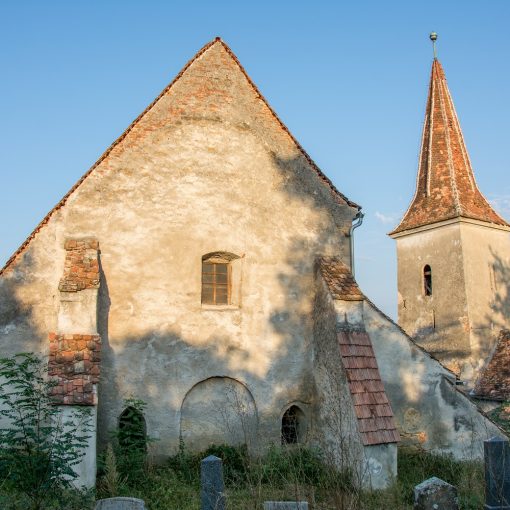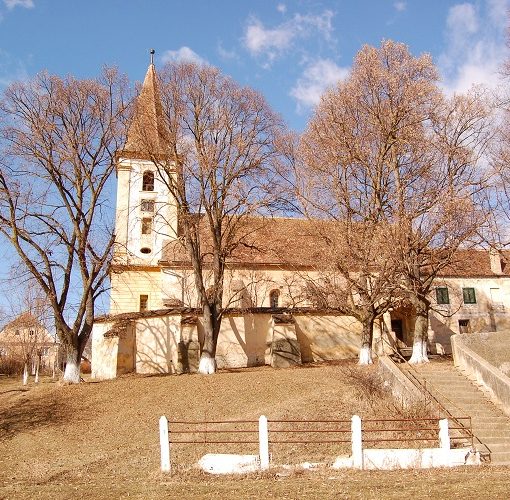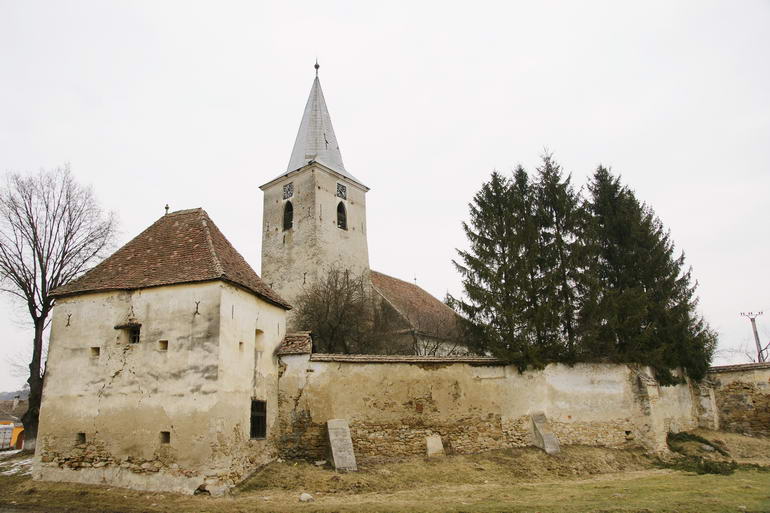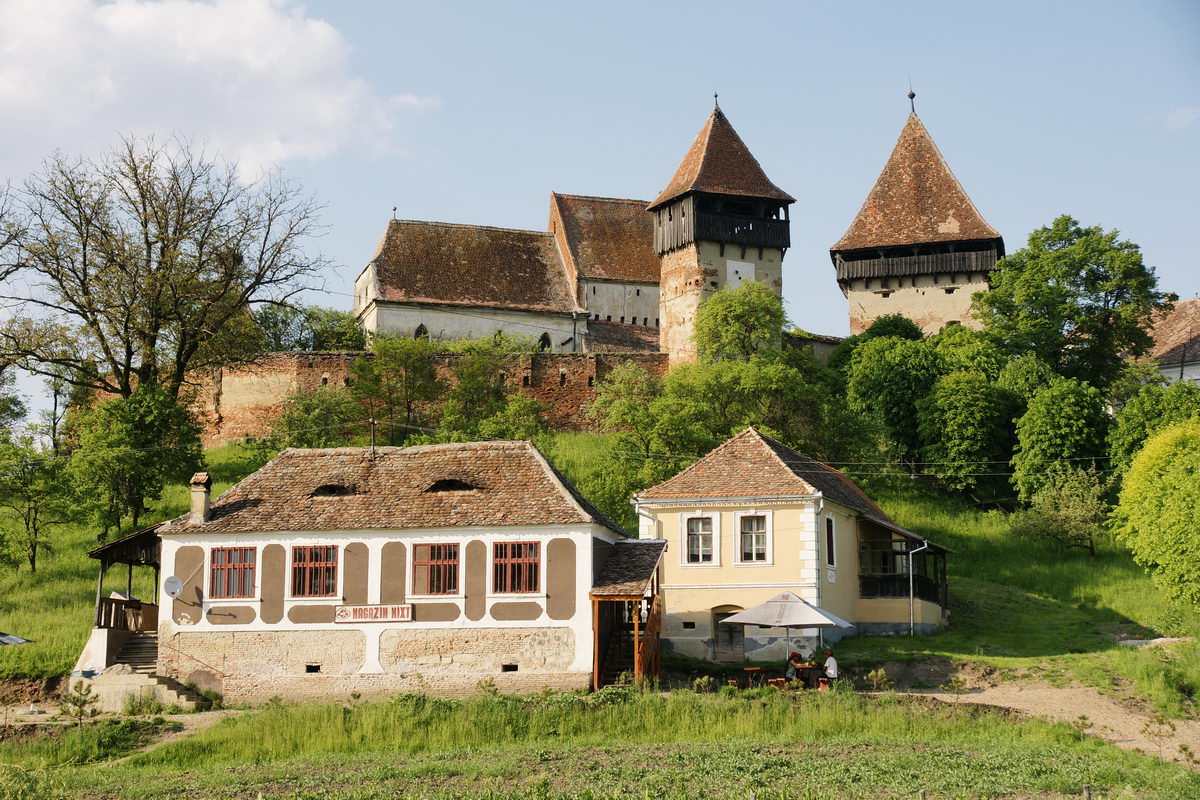
At the beginning of the 14th Century a small hall church was initially erected. In order to defeat the many attacks the chancel is heightened and provided with machicoulis at the beginning of the 16th century. At the end of the same century, a wall boasting four defensive towers oriented towards the four cardinal points surround the church. The first floor of the bell tower was habitable, equipped with a smoke funnel. The second floor has small bays on every corner, each having three embrasures, a construction detail that can be found in Thuringia, Germany. Very interesting to visit is the gate tower, a massive structure on 5 levels, three of them equipped with defensive systems and a parapet walk on the highest level.
Place and surroundings
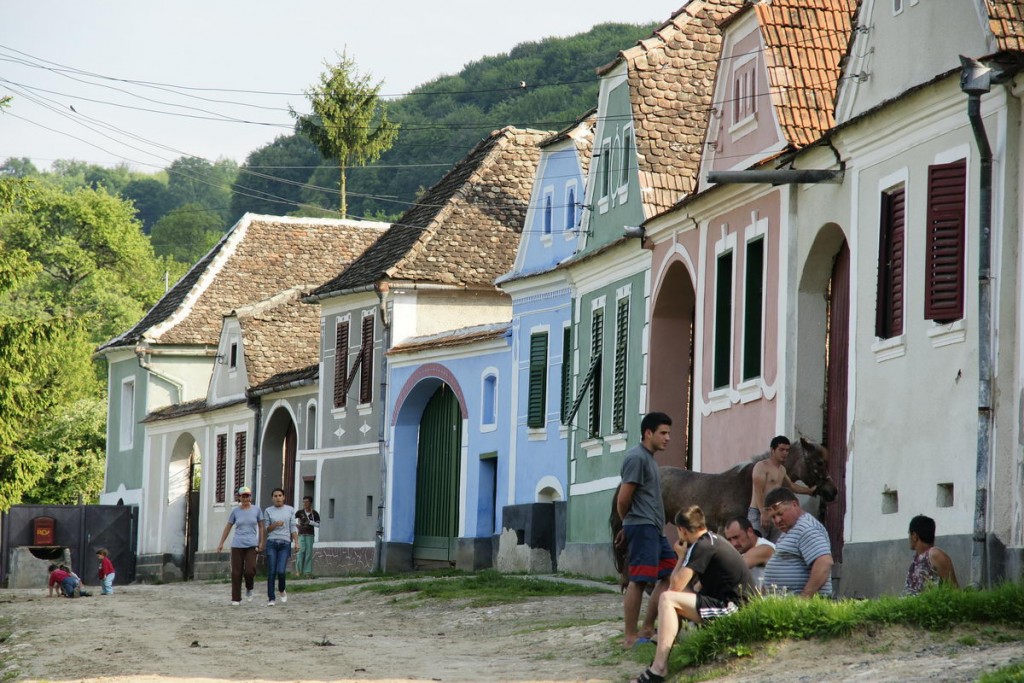 The origin and the meaning of the village name cannot be completely identified. However, it is assumed to originate in the old German word “almo”, which means elm or to derive from the Hungarian word for apple. In favour of the last one militates the usage of the meadows around and in Alma Vii for growing fruit trees. Uphill in the middle of the village stands the mighty, never conquered fortified church. It is said that Alma, the wife of the fortress’s guardian, is the one who first saw the threat of the Tartar army approaching and, to buy time for the villagers to escape, she put some rags on and soiled her face with jam and soot, thus terrifying the pagan attackers.
The origin and the meaning of the village name cannot be completely identified. However, it is assumed to originate in the old German word “almo”, which means elm or to derive from the Hungarian word for apple. In favour of the last one militates the usage of the meadows around and in Alma Vii for growing fruit trees. Uphill in the middle of the village stands the mighty, never conquered fortified church. It is said that Alma, the wife of the fortress’s guardian, is the one who first saw the threat of the Tartar army approaching and, to buy time for the villagers to escape, she put some rags on and soiled her face with jam and soot, thus terrifying the pagan attackers.
Activities
The Mihai Eminescu Trust (MET) has been active in Almen since 2009 and has since carried out various projects for the restoration of the fortified church and general village development. Together with international partners, the Trust is building the Centre for Interpretation of Traditional Culture. For more information, see www.almavii.ro or www.mihaieminescutrust.ro
Contact:
Mihai Eminescu Trust
Tel.:+40/269/862 552
Tel.:+40/269/862 501

